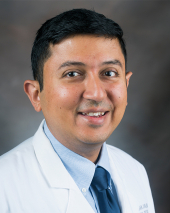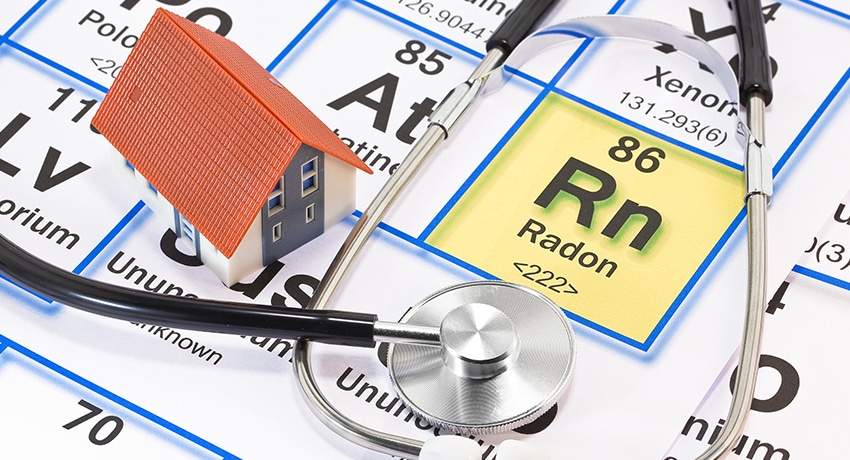Polk County — just 75 miles northeast of Houston near Livingston — has the highest incidence of cancer in Texas, according to the Texas Cancer Registry. Its numbers are more than 50% higher than the state average. Areas around Greater Houston (Chambers, Liberty, and Walker Counties) also report some of the highest cancer rates in the state.
Smoking contributes to 80-90% of lung cancer cases, especially in smokers. For nonsmokers, there is a lesser-known risk factor, besides secondhand smoke. Radon, a product of uranium and radium, is responsible for 21,000 lung cancer deaths in the United States a year, based on estimates by the Environmental Protection Agency. It’s also the leading cause of lung cancer for nonsmokers.

Pushan Jani, MD, an interventional pulmonologist with UT Physicians who focuses on lung cancer, said there is not much awareness around radon exposure.
Part of the lack of awareness, Jani said, relates to the numbers. When you take 100 cases of lung cancer, 95% to 98% will be due to smoking or secondhand smoke. Public health efforts, as a result, tend to focus on smoking cessation and tobacco cessation programs, rather than the small percentage from other causes.
“But 21,000 is still a lot of people,” said Jani, associate professor of pulmonary and critical care medicine at McGovern Medical School at UTHealth Houston. “I think it’s important to talk about radon, since it’s our region that has some of the highest number of lung cancer cases in the state.”
As a radioactive gas, radon can damage the respiratory epithelium, or lining of the lungs. Typically, radon is present in soil and rocks, and can seep into homes through cracks and holes in the foundation. It can be a silent killer, because radon cannot be seen, smelled, or tasted.
Value of screening
Jani said most people, unfortunately, do not experience symptoms of lung cancer until it’s too late. Lung nodules appear in the initial stages of lung cancer, but they do not cause any symptoms. These are not detected unless patients go through annual lung cancer screening CT scans.
Because of lack of awareness among patients and physicians alike, Jani said barely 5% of eligible patients get lung cancer screenings in United States. More than 80% of patients get diagnosed at an advanced stage of lung cancer, when they have symptoms such as difficulty breathing, unresolved cough, coughing up blood, or losing weight.
Taking proactive steps
As with many conditions in health care, prevention is key.
Measuring radon levels in your home is one simple way to be informed. Fortunately, there is an easy way. Jani said hardware stores sell a kit for $20-$30 that measures the radon levels in your home. This sample is then sent to a lab to reveal if the levels are harmful or within prescribed limits.
“If the test shows the radon levels are more than four picocuries per liter (pCi/l), then you need to involve a licensed professional to help with reducing the radon,” Jani said. A picocurie is a measurement of radon present in one liter of air. A radon mitigation system can be as simple as using underground pipes and an exhaust fan to remove radon gas before it can enter the home.
Future construction also can play a role, from a prevention standpoint, Jani said. Radon-resistant construction techniques deter radon from entering homes. Homeowners can work with builders to ensure they incorporate radon-resistant features. One feature, for example, is adding a 4-inch layer of gravel below the foundation to allow an air flow layer.
The State of Lung Cancer (2022) in Texas provides analysis by the American Lung Association. For more information regarding radon, check out the EPA’s resources regarding radon and its health risks. To find a radon mitigation professional, visit the National Radon Proficiency Program, a certification program administered by the American Association of Radon Scientists and Technologists, Inc.



